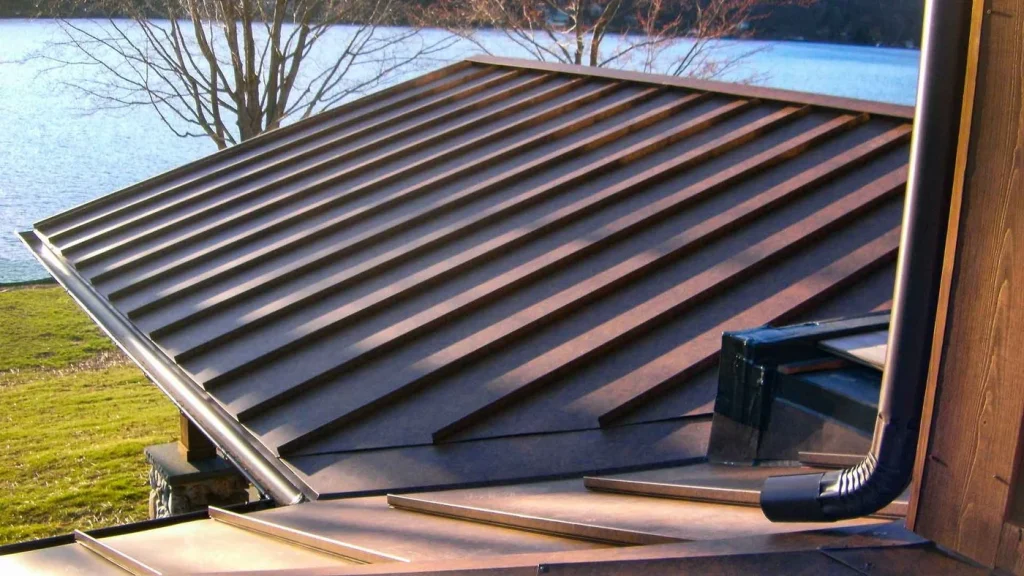When it comes to roofing options, metal roofs have gained popularity for their durability, longevity, and energy efficiency. Within the realm of metal roofing, various design elements can be incorporated to improve its performance and aesthetics. One such feature is metal roof striations. In this article, we will delve into the concept of metal roof striations, their benefits, and why they are becoming a preferred choice for homeowners and commercial properties alike.

Understanding
- What are Metal Roof Striations? Metal roof striations refer to the horizontal or vertical lines that are intentionally embossed or pressed onto the metal panels during the manufacturing process. These linear patterns add texture to the metal surface and are designed to serve specific purposes.
- Types: There are various types of this roof available, each offering unique advantages. Common types include pencil ribs, minor ribs, and major ribs. Pencil ribs are narrow and subtle, providing a minimalistic appearance. Minor ribs are more prominent and offer increased structural support. Major ribs are the boldest, enhancing the aesthetics and strength of the metal roof.
Benefits of Metal Roof Striations
- Improved Strength and Structural Integrity: Metal roof striations, especially major ribs, significantly improve the strength and structural integrity of the roofing system. The embossed lines create rigidity and prevent the metal panels from flexing under heavy loads, such as snow accumulation or strong winds. This added strength enhances the roof’s ability to withstand extreme weather conditions, making it a reliable option for areas prone to storms and harsh climates.
- Enhanced Water Drainage: The linear patterns of this roof create channels that facilitate efficient water drainage. Rainwater and melting snow can easily flow off the roof surface, reducing the risk of water pooling and potential leaks. Proper water drainage is crucial in preventing water-related damage to the roof and ensuring the longevity of the roofing system.
- Wind Uplift Resistance: Metal roof striations, particularly when used in combination with major ribs, enhance the roof’s wind uplift resistance. The embossed lines act as anchors, securing the metal panels to the roof structure more effectively. This feature is particularly advantageous in regions prone to hurricanes and high winds.
- Aesthetic Appeal: this roof can significantly enhance the visual appeal of the roofing system. The textured patterns add dimension and interest to an otherwise flat metal surface. Homeowners and property managers can choose from various striation styles to match the architectural design and aesthetics of their buildings.
- Reduced Noise from Rainfall: The presence of metal roof striations can help reduce the noise generated by rainfall on the metal surface. The embossed lines break up the direct impact of raindrops, resulting in a quieter indoor environment during heavy rains.
Installation and Maintenance
Metal roof striations are incorporated into the metal panels during the manufacturing process, ensuring consistency and precision. During installation, experienced roofing contractors ensure that the striations align correctly and provide the intended benefits.
As for maintenance, metal roofs are already known for their low maintenance requirements. Regular inspections and occasional cleaning are typically sufficient to keep the roof performing optimally.
Conclusion
Metal roof striations offer a myriad of benefits, from increased strength and structural integrity to improved water drainage and wind uplift resistance. Additionally, their aesthetic appeal adds character to the roofing system while reducing noise from rainfall. Whether you are considering a metal roof for a residential or commercial property, the addition of this roof can enhance the overall performance and appearance of your roofing investment. Consult with a reputable roofing professional to explore the various metal roof striation options and enjoy a durable, efficient, and visually appealing roofing solution.



Leave a Reply